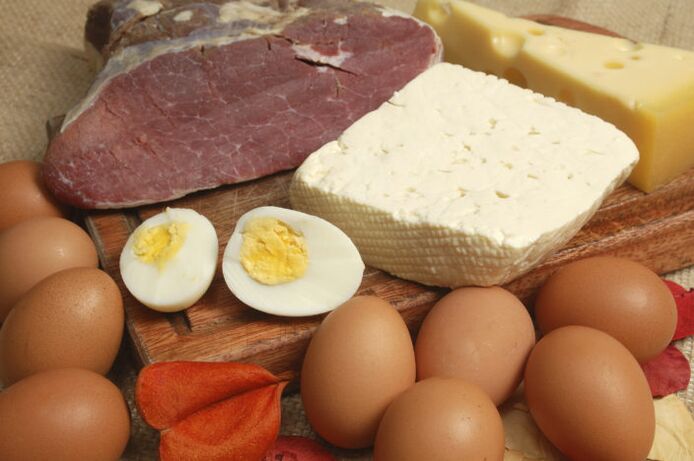Keto diet.Ketogenic diet, what is its essence?What are the results and reviews of the ketogenic diet?How does it work, what are the difficulties, what is the menu of the ketogenic diet and whether it is harmful.

- keto diet
- The keto diet is a low-carb, high-fat diet designed to provide the body with ketones.
Why does the ketogenic diet work, what are the contraindications and reviews, and how does it work?What should be included in a ketogenic diet menu?What about the reviews from dieters?That's what we're going to talk about today.
How does the keto diet work?
When our diet contains fat, protein, and carbohydrates, our bodies obtain energy from glucose.We get glucose from carbohydrates.Now that grocery stores are at your fingertips, this is the most common type of food.But what happens on those days when carbohydrate products like cereals or bread are scarce due to crop failure, habitat or seasonality?
The corpse is forced to obtain energy from fatty acids and proteins.You may remember my video about running for weight loss - right here - in which I looked at the process of gaining energy through fatty acid oxidation.Now I will briefly remind you that all our organs containing mitochondria in tissue cells work perfectly with the help of fatty acids.This is cardiac muscle, heart muscle, skeletal muscle (the same muscles we pump in the gym), and smooth muscle.
However, our brains (60% fat) do not lose weight; even prolonged fasting does not cause significant damage to intelligence.Why?The reason is that the blood-brain barrier (BBB) is a barrier that ensures a constant environment inside the brain.It is he who does not allow fatty acids to pass - neither outward (that is why the brain does not lose weight) nor inward.And the brain cannot consume fatty acids as a source of energy.
However, the brain cannot be without fuel, and nature dictates that since the diet does not provide sufficient amounts of glucose, the brain will turn to another source of fuel - so-called ketone bodies.
- Ketone bodies
Three substances called ketone bodies
- Acetoacetic acid (acetoacetate)
- Beta-aminobutyric acid (hydroxybutyric acid)
- acetone
These substances are formed in the liver from fatty acids, a process called ketogenesis.Acetone isn't produced in much; our main fuel is beta-aminobutyric acid.In most cases, it is during the lack of carbohydrates in the diet that the central nervous system comes into play.

Is the ketogenic diet any good?
Ketosis is a completely normal metabolic process and there is nothing to fear.All the fear stems from the fact that the state of ketosis (when the body uses ketone bodies to do its work) is often confused with pathological acidosis, which requires urgent intervention.But these things are different, now let’s discuss what the essence is.
ketoacidosis
What is it - ketoacidosis.This is pretty much the same as ketosis, but instead of being caused by a lack of glucose from a lack of carbohydrates, it's caused by a lack of insulin.Let me remind you that our most important hormone, insulin, is a transporter protein.This is our loader that knows how to carry glucose across the cell membrane.
When large amounts of glucose are present, but insulin is absent or unable to perform its function, cells begin to experience energy starvation, as would be the case with a carbohydrate-free diet.As a result, the body produces a bunch of hormones that break down fat (lipolytic, in this case they are called anti-insulin hormones), and the liver starts producing ketone bodies from fatty acids.So what's going on?
There is a lot of undigested glucose, but also a lot of ketone bodies, and the kidneys try to get rid of the excess ketones and glucose, leading to dehydration—what's called osmotic diuresis.Because of the diuresis, the electrolytes are flushed away - and you remember from this video, this is very, very bad, even two - the balance of electrolytes shifts to acidification, and as a result, this ketoacidosis occurs.All this required urgent hospitalization, as the patient moved his horse easily.
It is obvious that this situation can only happen in two situations
- Type 1 diabetes, when the pancreas does not produce insulin
- Dehydration - diarrhea, vomiting, taking diuretics.
In other words, if you are healthy and do not have type 1 diabetes, you do not need to worry about ketoacidosis at all.In your case, the nervous system will work perfectly on ketones.
So, How to Use the Ketogenic Diet
firstAnd the most important thing is getting into ketosis.This is one of the most difficult tasks.Because in most cases - remember what I told you about homeostasis - people are eating foods containing carbohydrates for the first time in decades - and that puts stress on the body.The body isn't used to this, and you won't enter a state of ketosis within a day or two.This takes time.First, the body uses up remaining glucose and glycogen.It then attempts to use gluconeogenesis to produce glucose from amino acids, glycerol, and lactic acid.Only when it is completely impossible for him to start the ketogenic process, accompanied by a crunching sound, the nutritional system of the central nervous system begins to be dragged onto a new trajectory.Remember, corpses really don't like their homeostasis being disturbed and will try their best to resist.
This first time is the hardest - you're sluggish, angry, have no energy, your brain refuses to work, you're dizzy - and a bunch of other pleasures.How long this lasts is different for everyone, but it can last up to two to three weeks.
second.To enter ketosis, you need to cut out carbs or keep them to a minimum - which is another difficulty.Some organs cannot use fatty acids or ketone bodies for energy.They need glucose and only glucose - which is the intestinal epithelium, the endothelium of blood vessels, the lens of the eye, the adrenal cortex, and other things - I can't remember.So you can't leave them without glucose.The carcass will obtain glucose through gluconeogenesis from muscle or from minimal carbohydrates provided by food.But that’s the point – remember homeostasis – the desire to maintain balance at all costs – getting into ketosis is hard, but getting out of ketosis is as easy as peeling a pear.And then hello, look at the fat deposits on the sides of your back.
third— To get into ketosis, you need to eat a lot of fat and not under any circumstances eat too much protein!!!!And this is also very difficult to control.Because if there's too much protein in the diet - from which the body immediately produces glucose, with the help of the same gluconeogenesis - you'll fall out of this hard-won state of ketosis again.If I have too little protein, I will gradually lose muscle.For beginners, finding this balance is very, very difficult.When it comes to fat, it's all simple - 80% of your diet should be fat.
fourth- Difficulty assessing whether we have entered a state of ketosis.
- There is no point in testing urine for the presence of acetone with test strips.We may be in a state of ketosis and there will be no acetone in the urine.
- It is possible to perform blood analysis using a glucose meter with special test strips for ketones, but these strips are not cheap at all.
- Finally, there are special devices for detecting acetone in breath.They were created for people with epilepsy because a ketogenic diet can help with seizures, but they also cost around $100.
Finally, if you decide to try the ketogenic diet, how do you plan your meals?
- Protein - 1.5-2 grams per body weight.This is conditional.
- The rest is fat.

What foods are suitable for a ketogenic diet?
- Eggs with yolk
- all cheese
- fatty cheese
- sour cream
- salou
- pork
- nut
- salmon
- trout
- salmon
- mutton

















































































